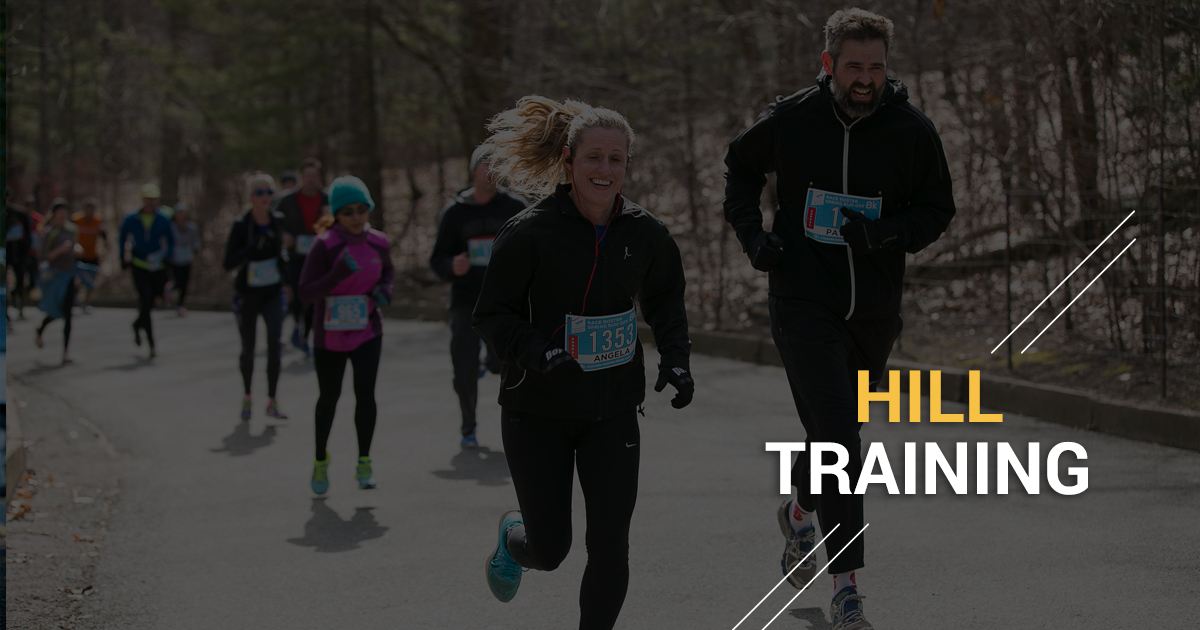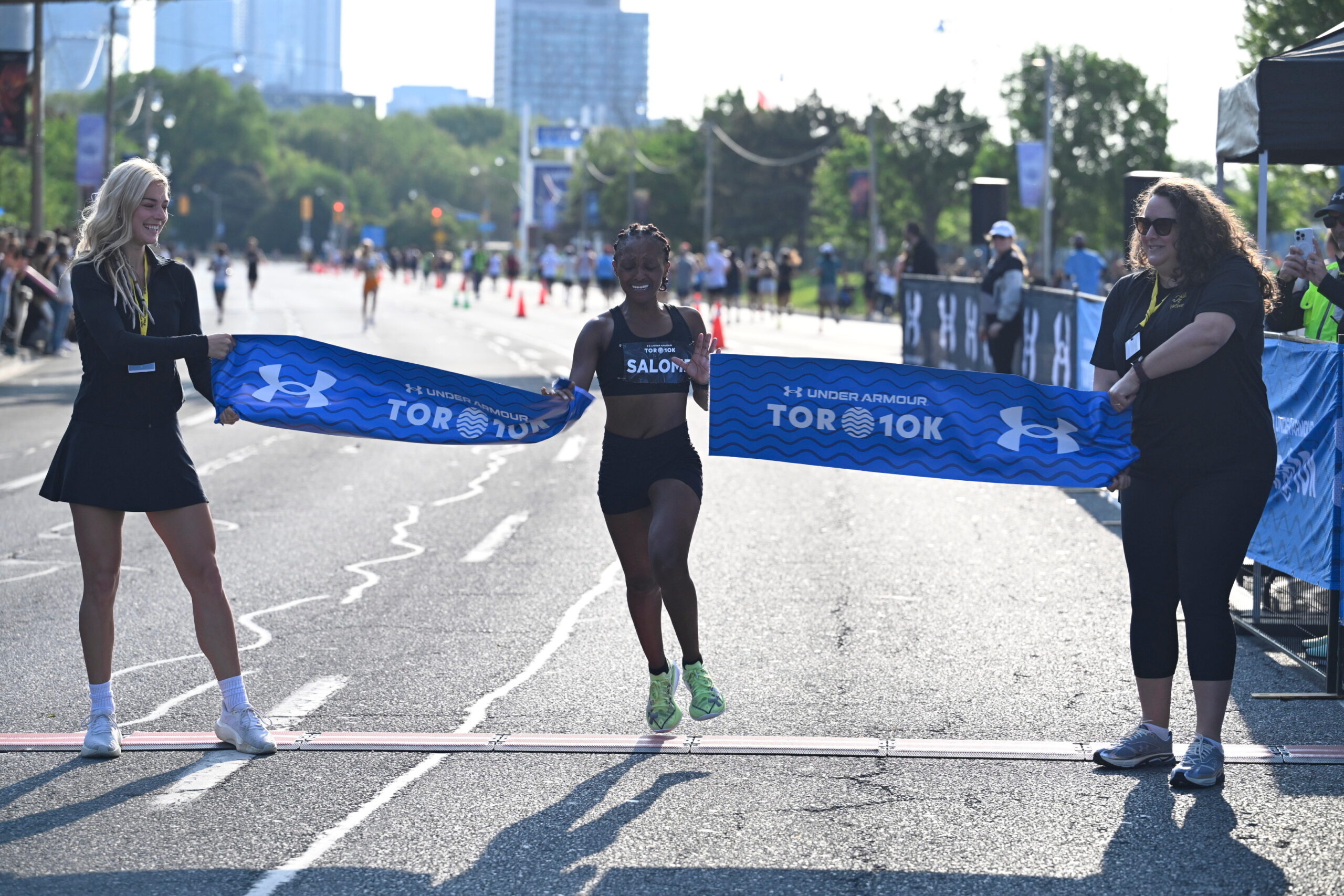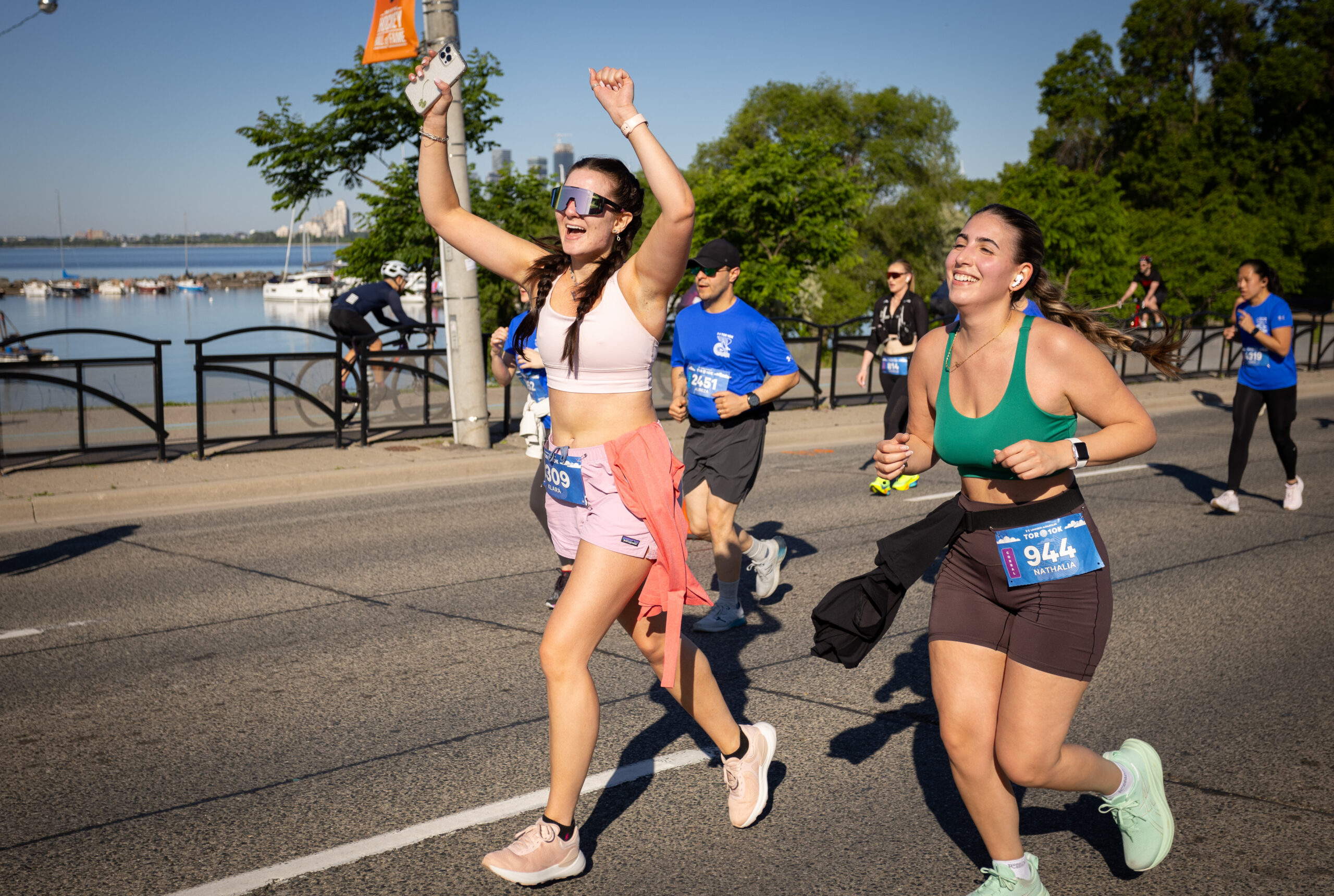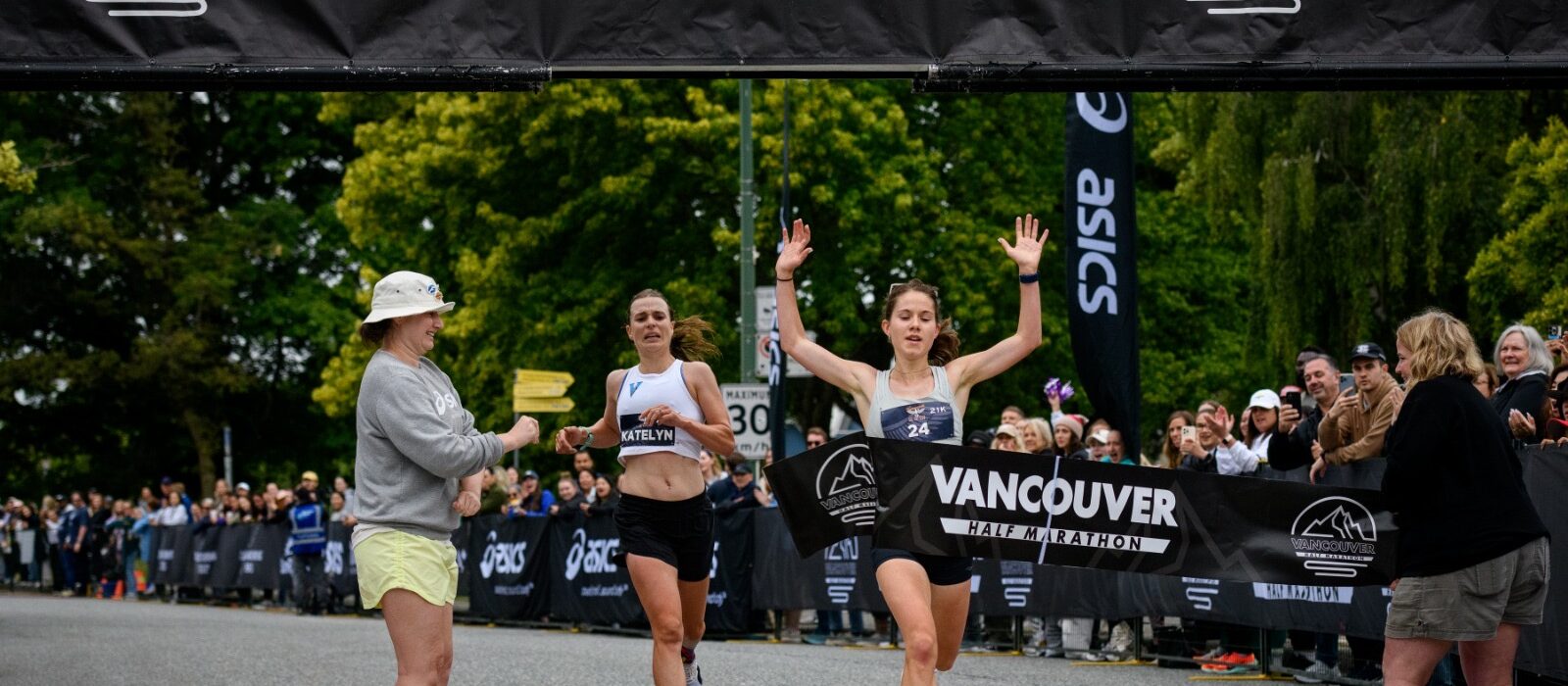
Hill training is one of the pillars of any runner’s workout program. Through the course of a season, the type of hill training can vary from short, explosive hills, to longer hill repeats, to runs on a hilly course depending on the purpose of the workout.
There are many benefits of including hill training into your running program, with the most obvious being added strength and power. Running uphill requires increased muscle recruitment from our main movers which improves their muscle endurance and neuromuscular responsiveness. Not only do hills benefit runners from a physiological standpoint, but they can help to improve form, posture, cadence and efficiency. It’s difficult to run with poor form on hills as the uphill propulsion requires a runner to be on their toes, with a slight forward lean from the ankles, and a higher cadence to drive you up the hill. The less time you spend on the ground, the quicker your feet move, and the faster you get up the hill! Hills provide similar speed and strength benefits as track workouts without too much impact on the body. This is essentially why a lot of programs have hills as an integral part of any off-season and start-of-season training. It helps get the body into shape, increases speed and power, without the risk of injury.
So what types of workouts are there and what’s the best way to execute them?
1. Short, explosive sprints:
As these workouts are short and powerful, they are not a primary fitness-building workout, but are a great tool for working on form and efficiency. There are two main purposes to these workouts. They work on activating and improving neuromuscular system function which is the main communication between the brain and the muscles. By improving this system, the speed of signaling from the brain to the muscles increase and you’re able to recruit more muscle fibers to create more powerful movements. Second, these hills enhance the heart’s maximal stroke volume, which is the amount of blood pumped out with every heartbeat. The more blood pumped out in a single beat will decrease one’s heart rate, resulting in a more efficient heart.
During a workouts, the hills are a maximum of 30 seconds long, with a gradient of 5-15%. Using one’s anaerobic system, the athlete can focus on an efficient running technique with vigorous arm movements, high knee lift, with the hips kept high and forward to utilize our big muscles groups like the glutes, quads and hamstrings.
How to do it: Start with four or five reps of 50–100m (10–30 seconds) up a steep hill, then build up over a few sessions to eight to 12 reps. For recovery, walk back down the hill and wait until 2–3 minutes have passed.
2. Medium hills
Starting to get into hill repeats, medium hills take between 30-90 secs to run up. They combine the benefits of the short, explosive hills as listed above, as well as stressing one’s muscular endurance and tolerance of lactic acid. Combining the anaerobic system of the short, steep hills, and the aerobic component of a longer duration interval will build up your blood lactate as you go up the hill; aka your legs start to burn and you have to keep going.
How to do it: Choose a grade of hill that still allows you to run near race pace, about 6-10%. Similar to the short hills, form is key: a good knee drive; hips pushed forward; and the back is upright. Aim to increase the number of reps about 1-2 every time a medium hill workout is on the training schedule. Using a slow jog to get to the bottom of the hill again is a big part of your recovery between intervals. When you’re just starting out do about 8-10 repeats, and increase gradually each time you do the workout.
3. Long hills
The longest hill intervals are between 90 sec to 3 minutes long. These sessions are best for people wanting to improve their hill running skills and improve their aerobic fitness and muscle strength. Compared to strength training in the gym, hills are a functional way to increase the muscles capacity to withstand intensity while working the muscles necessary for running fast: muscles surround the hips, glutes and quads. Most of your energy comes from aerobic sources, but there will still be a bit of lactic acid buildup in the legs, but it’ll feel more like muscle fatigue compared to the burning muscles the shorter intervals provide!
How to do it: Due to the broad spectrum of duration for these longer intervals, note that the further you’re going, the less intensity you can apply. When starting out aim for 6-8 hill repeats lasting over 1 minute each, and build in a few more reps every time you repeat this workout. It’s a great simulation of longer track intervals without the pounding.
4. Rolling hills
While hill intervals won’t necessarily make you a better runner on a hilly course, incorporating a hilly route for long runs/tempos will be useful. Knowing what kind of course your goal race is going to be on will help you determine just how hilly your runs needs to be. Doing longer efforts on a rolling course will allow you to maintain your pace while going up and down hills, as well as on a flat surface. If you attack a hill too hard early into the race, you could tax your legs and suffer during the race before you expected.
How to do it: Try to maintain the same effort going up and down hills; you’ll naturally go faster on the downhill without increasing your effort. Not only that, but running downhill at a decent effort is great practice too. Hilly routes will work your muscles in both concentric and eccentric contractions and will prepare the body for the pounding of running downhill.











 My first day of training was interesting. I was nervous and I thought that all the other participants would run with ease while I fell behind. Thankfully, all of the
My first day of training was interesting. I was nervous and I thought that all the other participants would run with ease while I fell behind. Thankfully, all of the  What I loved most about the ‘Learn to Run’ program is that
What I loved most about the ‘Learn to Run’ program is that 





